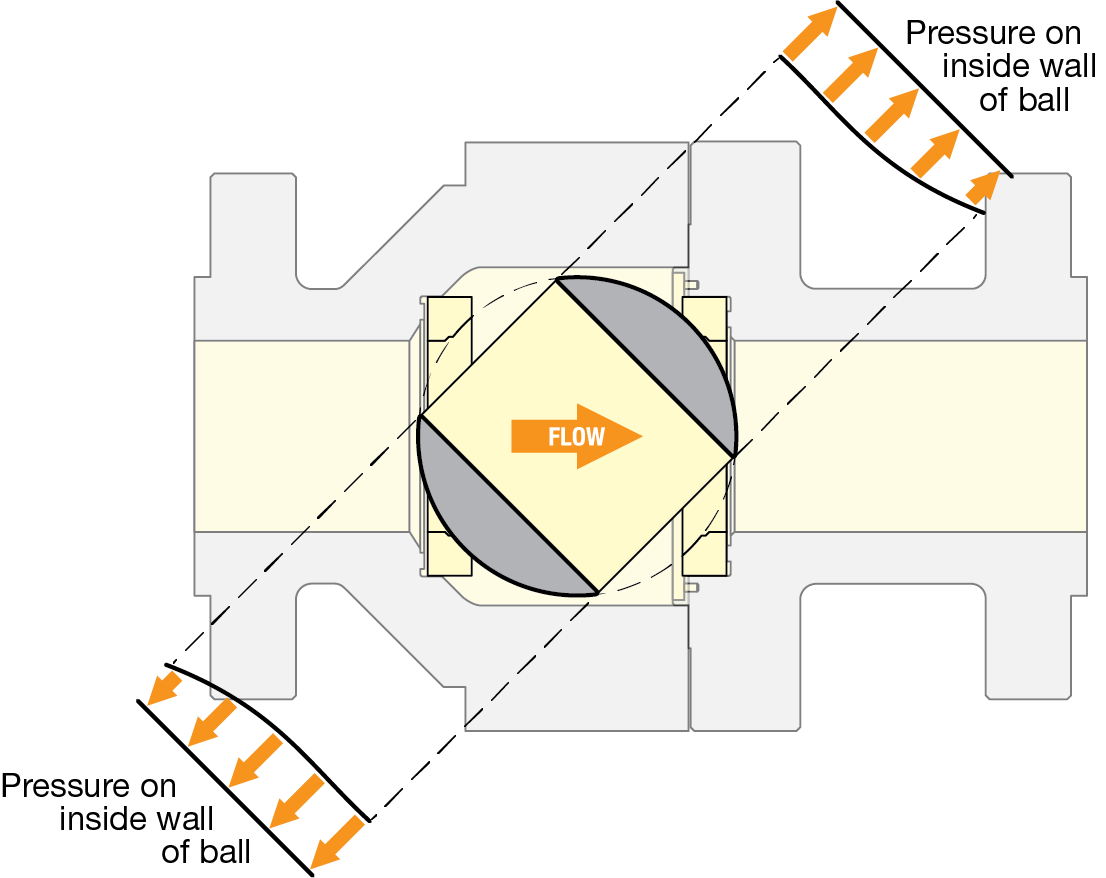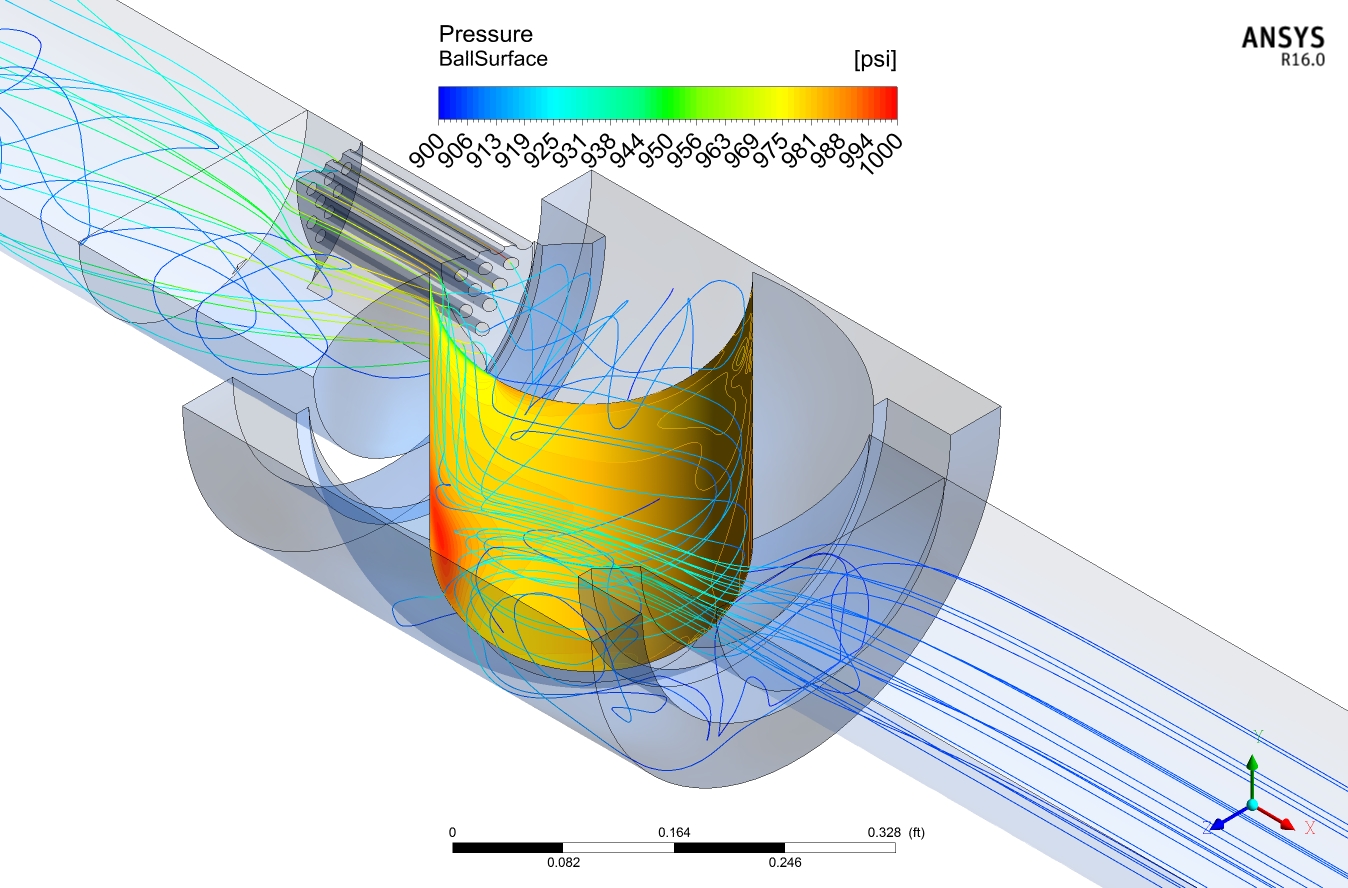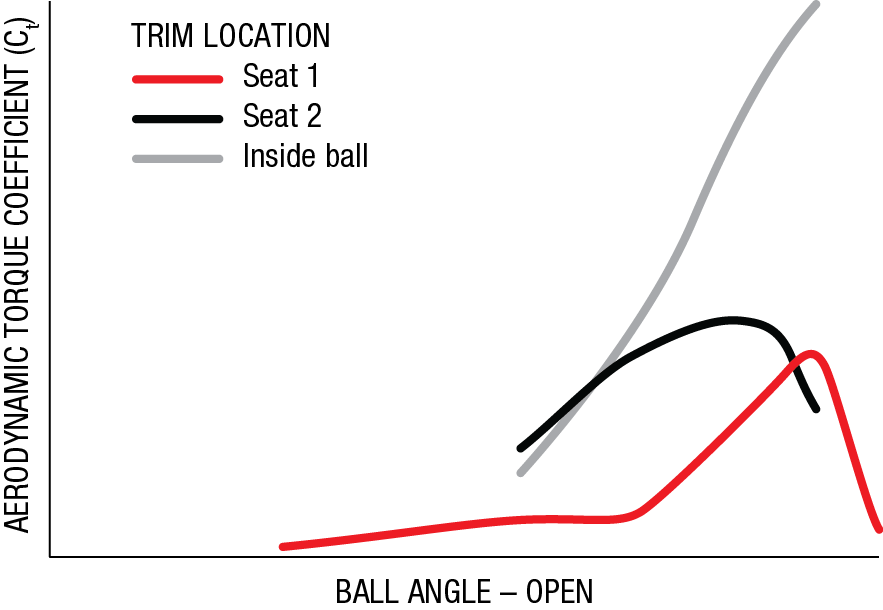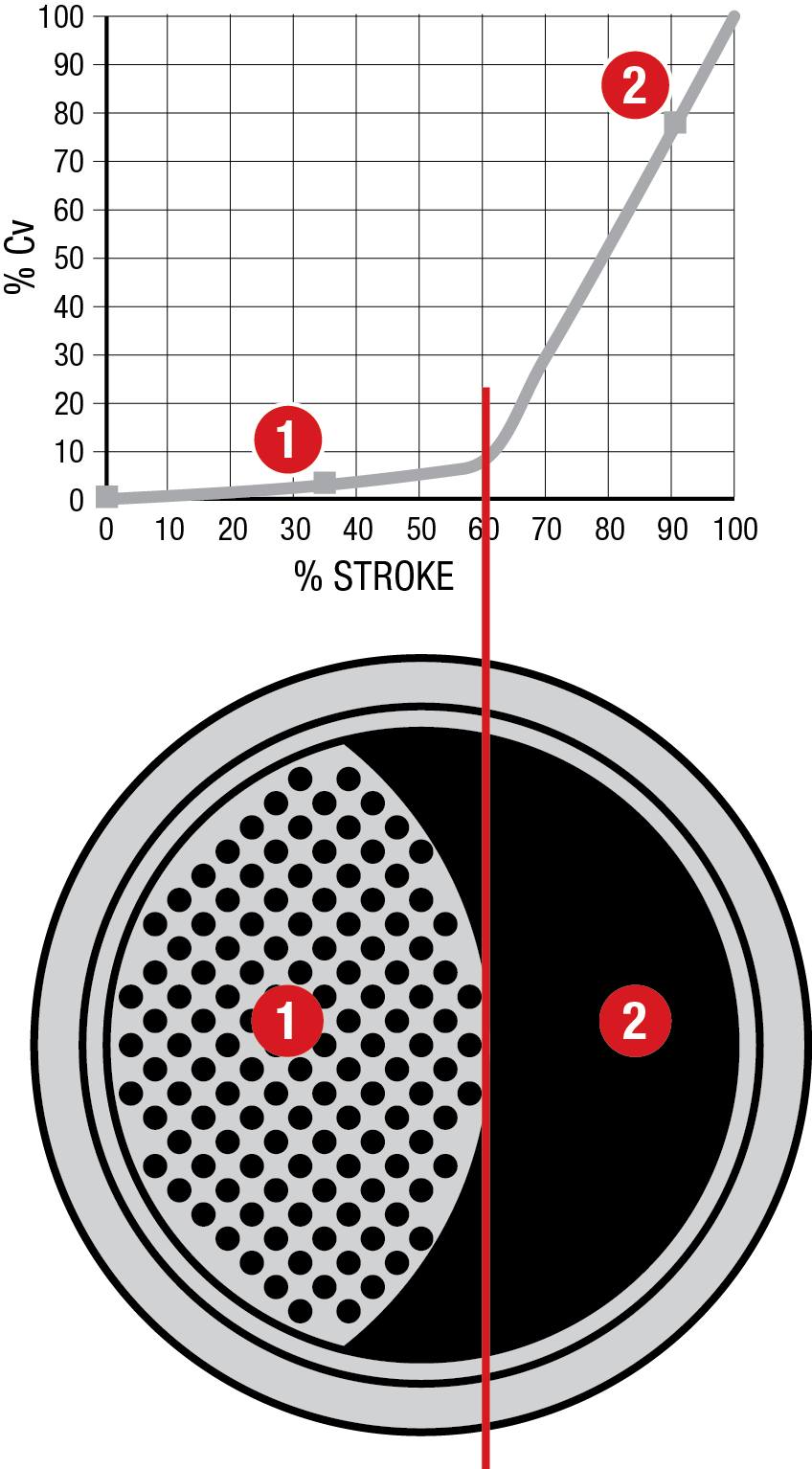As fluid flows through a rotary control valve, static pressure does not act uniformly on the ball’s surface. This creates unbalanced forces causing additional torque on the closure element called ‘aerodynamic torque’ (Figure 1). For effective actuator sizing, aerodynamic torque must be considered as well as the friction torque. If omitted, it may have an undesirable change or interruption to the process, and eventually stall the actuator. This phenomenon is well recognized in the butterfly valve industry; however, it becomes more complex in control valve applications. In general, adding control trim to a ball valve alters the symmetric shape and significantly impacts its aerodynamic torque curve, making it difficult to predict.
 Figure 1. Aerodynamic torque is caused when non-uniform static pressure distribution from fluid flows past the ball.
Figure 1. Aerodynamic torque is caused when non-uniform static pressure distribution from fluid flows past the ball.
Dynamic torque study
MOGAS is investigating the impact of aerodynamic torque on an overall torque curve, with a goal to customize the torque curve to suit the user’s specific flow conditions. The modified torque curve will ensure accurate and reliable actuator sizing with potential reduction in overall actuator cost.
In this study, computational fluid dynamics (CFD) combined with the well-recognized aerodynamic torque equation, Td = Ct D3 Y Δp, are used to predict the aerodynamic torque behaviors. Figure 2 shows how aerodynamic torque is caused by non-uniform static pressure distribution when fluid flows past the ball's surface. It was found that a substantial difference in the aerodynamic torque coefficient (Ct) occurs depending on the control trim location. The seat trim configuration has the most favorable aerodynamic torque coefficient of all positions tested. More than 50% reduction in aerodynamic torque coefficient can be obtained by changing the trim location from inside the ball to the seat configuration (Figure 3).
 Figure 2. CFD-simulated pressure distribution in ball surface (Flow direction from right to left).
Figure 2. CFD-simulated pressure distribution in ball surface (Flow direction from right to left).
 Figure 3. Aerodynamic torque coefficient trend versus ball angle for different trim locations.
Figure 3. Aerodynamic torque coefficient trend versus ball angle for different trim locations.
Ultra-high rangeability
Trim technology also plays a significant role in torque reductions. In fact, up to 15 times reduction in Ct values can be achieved by changing the ultra-high rangeability trim design. Innovative designs can provide more than 50 different variations of trim styles for each valve size and pressure class. Trim style can be customized to suit any user flow rate and pressure drop requirements by varying trim type, percentage filled and number of turns, resulting in a rangeability that can exceed 300:1.
Achieving a unique flow characteristic Cv
It is important to use the correct coefficient curve for reliable actuator sizing, due to the large variations in the aerodynamic torque coefficient.
The aerodynamic torque is proportional to the product of aerodynamic torque coefficient (Ct) and valve pressure drop (Δp). The peak of Ct curve commonly occurs near the full open position in conventional ball valves, but the peak in aerodynamic torque may occur at a different valve position, depending on the valve pressure drop. Achieving a unique flow characteristic Cv lift curve will ensure tight control and high pressure drop at a low flow rate (Figure 4, point 1). As the valve opens further, low-pressure-drop/high flow rate can be introduced (Figure 4, point 2). This behavior highlights the advantage of combining a unique flow characteristic Cv lift curve and variable valve pressure drop systems in aerodynamic torque reduction. In general, an effective trim design will significantly reduce the aerodynamic torque depending on the type of trim and percentage filled used. For example, the Ct values for a 100% filled trim is 15 times less than the Ct values obtained in 30% filled trim.
 Figure 4. Modified flow characteristic curve
Figure 4. Modified flow characteristic curve
Ongoing R&D MOGAS Industries initiated the aerodynamic torque study to evaluate its FlexStream® trunnion ball valve design (Figure 5). Building upon their extensive field experience, MOGAS relentlessly pursues research & development breakthroughs in design, materials, coatings and other technologies to deliver the most-trusted, highest-quality valves in any industry.
 Figure 5. Cutaway of a MOGAS ball valve showing the most favorable seat location for aerodynamic torque reduction—more than 50% reduction in aerodynamic torque coefficient, Ct, can be achieved. (Flow direction from right to left).
Figure 5. Cutaway of a MOGAS ball valve showing the most favorable seat location for aerodynamic torque reduction—more than 50% reduction in aerodynamic torque coefficient, Ct, can be achieved. (Flow direction from right to left).